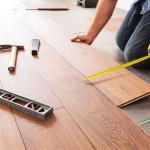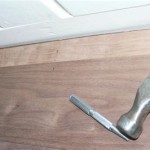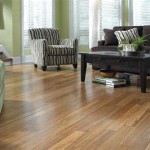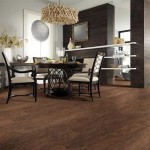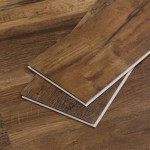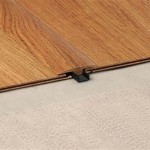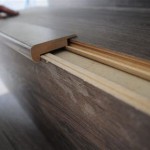```html
Hardwood Flooring Maine: A Comprehensive Guide
Hardwood flooring remains a popular choice for homeowners in Maine, and across the United States, due to its durability, timeless aesthetic, and potential to increase property value. Maine's specific climate and lifestyle considerations, however, necessitate a thoughtful approach to selecting and maintaining hardwood floors. This article provides a comprehensive overview of hardwood flooring options in Maine, covering aspects such as species selection, installation considerations, maintenance practices, and local market trends.
Species Selection: Balancing Durability and Aesthetics
The selection of hardwood species is a crucial step in the flooring process. Different species offer varying degrees of hardness, stability, and aesthetic appeal. Hardness is typically measured using the Janka hardness scale, which quantifies the force required to embed a steel ball into the wood. A higher Janka rating indicates a harder, more durable wood suitable for high-traffic areas.
Oak, both red and white, is a commonly chosen species in Maine. Red oak possesses a reddish hue and a relatively open grain pattern. It is generally more porous than white oak. White oak, on the other hand, exhibits a tighter grain and a more subdued color, offering superior water resistance compared to red oak and is often used in areas prone to moisture exposure. Both red and white oak are moderately hard, making them suitable for most residential applications.
Maple is another popular option known for its light color and consistent grain. Maple is harder than both red and white oak, making it a good choice for homes with children or pets. However, maple can be more susceptible to scratches and dents due to its lack of pronounced grain patterns, which tend to hide imperfections in comparison to oak.
For those seeking a more exotic or luxurious look, species like cherry, walnut, and hickory are available. Cherry offers a rich reddish-brown color that deepens with age. Walnut presents a dark, elegant appearance with a distinctive grain pattern. Hickory stands out for its extreme hardness and rustic aesthetic. These species often come at a higher price point than oak or maple.
Beyond domestic hardwoods, engineered hardwood options are increasingly popular. Engineered hardwood consists of a thin layer of real hardwood veneer bonded to a core of plywood or high-density fiberboard. This construction provides greater dimensional stability, making engineered hardwood less prone to warping or cupping in response to changes in humidity, a significant concern in Maine's variable climate. Engineered hardwood can be installed in areas where solid hardwood is not recommended, such as basements or over concrete slabs.
The moisture content of the wood is also crucial in Maine. Kiln-dried lumber with a moisture content appropriate for the region's average humidity levels is essential to minimize expansion and contraction after installation. An experienced flooring professional will ensure that the wood is properly acclimated to the home's environment before installation begins. This acclimation process typically involves storing the wood in the room where it will be installed for several days or weeks to allow it to adjust to the temperature and humidity levels.
Installation Considerations: Adapting to Maine's Climate and Building Styles
Proper installation is critical to the long-term performance and appearance of hardwood flooring. In Maine, several factors must be considered during the installation process, including the subfloor condition, the presence of moisture, and the chosen installation method.
The subfloor must be level, clean, and dry before hardwood flooring can be installed. Any unevenness in the subfloor should be corrected to prevent the hardwood from creaking or flexing. Moisture testing of the subfloor is indispensable to ensure that it meets the manufacturer's requirements for moisture content. Excessive moisture can cause the hardwood to warp, buckle, or develop mold and mildew.
Several installation methods are commonly used for hardwood flooring: nail-down, glue-down, and floating. The nail-down method is typically used for solid hardwood flooring installed over a wooden subfloor. Nails are driven through the tongue of each plank into the subfloor, creating a secure and stable connection. The glue-down method involves applying adhesive to the subfloor and then pressing the hardwood planks into the adhesive. This method is often used for engineered hardwood flooring installed over concrete slabs.
The floating method is generally used for engineered hardwood flooring that is designed to be installed without nails or glue. The planks are connected to each other using a tongue-and-groove system, creating a single, unified surface that "floats" over the subfloor. A moisture barrier is typically installed beneath the flooring to protect it from moisture rising from the subfloor.
Radiant heat systems are becoming increasingly popular in Maine homes. When installing hardwood flooring over radiant heat, it is essential to choose a species and installation method that are compatible with the system. Engineered hardwood is generally recommended for use over radiant heat because it is more dimensionally stable than solid hardwood. A floating installation method is often preferred because it allows the flooring to expand and contract freely without putting stress on the heating system.
Maine's older homes often present unique challenges during hardwood flooring installation. Uneven floors, irregular subfloors, and the presence of asbestos or lead paint require careful consideration and specialized techniques. An experienced flooring contractor will be able to identify and address these challenges to ensure a successful installation.
Maintenance Practices: Preserving the Beauty and Longevity of Hardwood Floors
Proper maintenance is essential for preserving the beauty and longevity of hardwood flooring. Regular cleaning, protection from scratches and dents, and humidity control are key aspects of hardwood floor care.
Regular sweeping or vacuuming is necessary to remove dirt and debris that can scratch the floor's finish. A microfiber mop can be used to clean the floor with a pH-neutral hardwood floor cleaner. Avoid using excessive water, as it can seep into the seams and cause damage. Never use abrasive cleaners, wax polishes, or steam cleaners on hardwood floors.
Protecting hardwood floors from scratches and dents is crucial. Place mats at entryways to trap dirt and moisture. Use furniture pads under the legs of tables, chairs, and other heavy items. Avoid wearing shoes with hard heels on hardwood floors. Trim pets' nails regularly to prevent them from scratching the floor.
Maintaining consistent humidity levels is critical for the stability of hardwood floors in Maine. During the winter months, when heating systems are running, the air inside homes can become very dry. Low humidity can cause the hardwood to shrink, leading to gaps between the planks. Using a humidifier can help to maintain a comfortable humidity level and prevent damage to the flooring.
Conversely, during the summer months, high humidity can cause the hardwood to expand, leading to cupping or buckling. Air conditioning and dehumidifiers can help to control humidity levels during this time. Proper ventilation in bathrooms and kitchens is also important to prevent moisture buildup.
The finish on hardwood floors will eventually wear down over time, requiring refinishing. Refinishing involves sanding the floor to remove the old finish and then applying a new coat of finish. The frequency of refinishing depends on the amount of traffic the floor receives and the type of finish used. A professional flooring contractor can assess the condition of the floor and determine whether refinishing is necessary.
Preventative maintenance is the best approach to preserving hardwood flooring. Regularly inspect the floor for signs of damage, such as scratches, dents, or water stains. Address any problems promptly to prevent them from escalating. By following these maintenance practices, homeowners in Maine can enjoy the beauty and durability of their hardwood floors for many years to come.
```
Freeport Maine Traditions Hardwood Flooring

Hard Maple Premium Clear Maine Traditions Hardwood Flooring

White Oak Premium Clear Maine Traditions Hardwood Flooring

White Oak Coastal Clear Maine Traditions Hardwood Flooring

Pro Hard Maple Clear Maine Traditions Hardwood Flooring

White Oak Sandstone Maine Traditions Hardwood Flooring

Hard Maple Grizzly Maine Traditions Hardwood Flooring

Maine Traditions Hardwood Flooring S Chicago Distributors Whole Top Quality

Red Oak Vintage Brown Maine Traditions Hardwood Flooring

Maine Hardwood Color Collection West Wood
Related Posts

